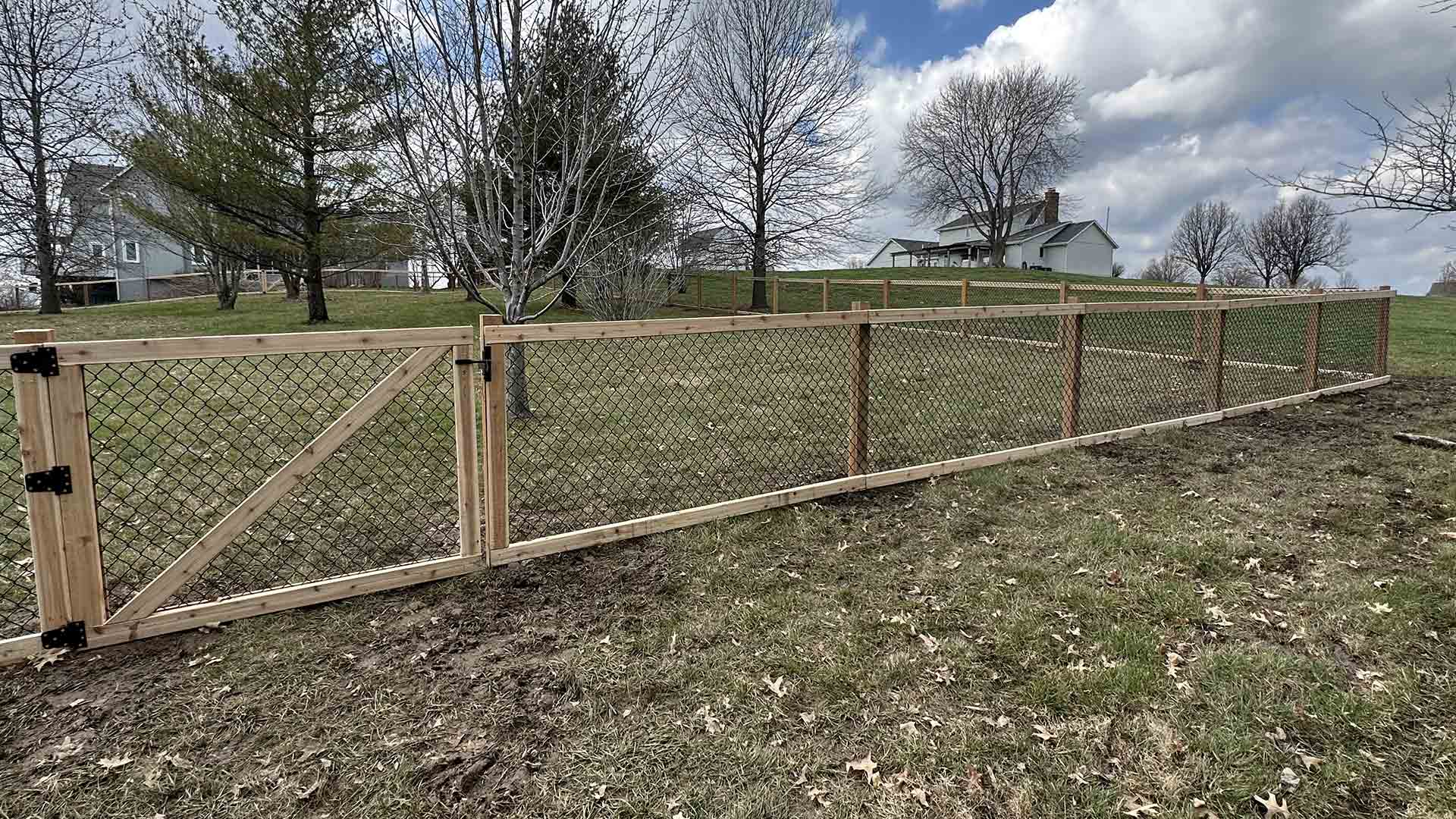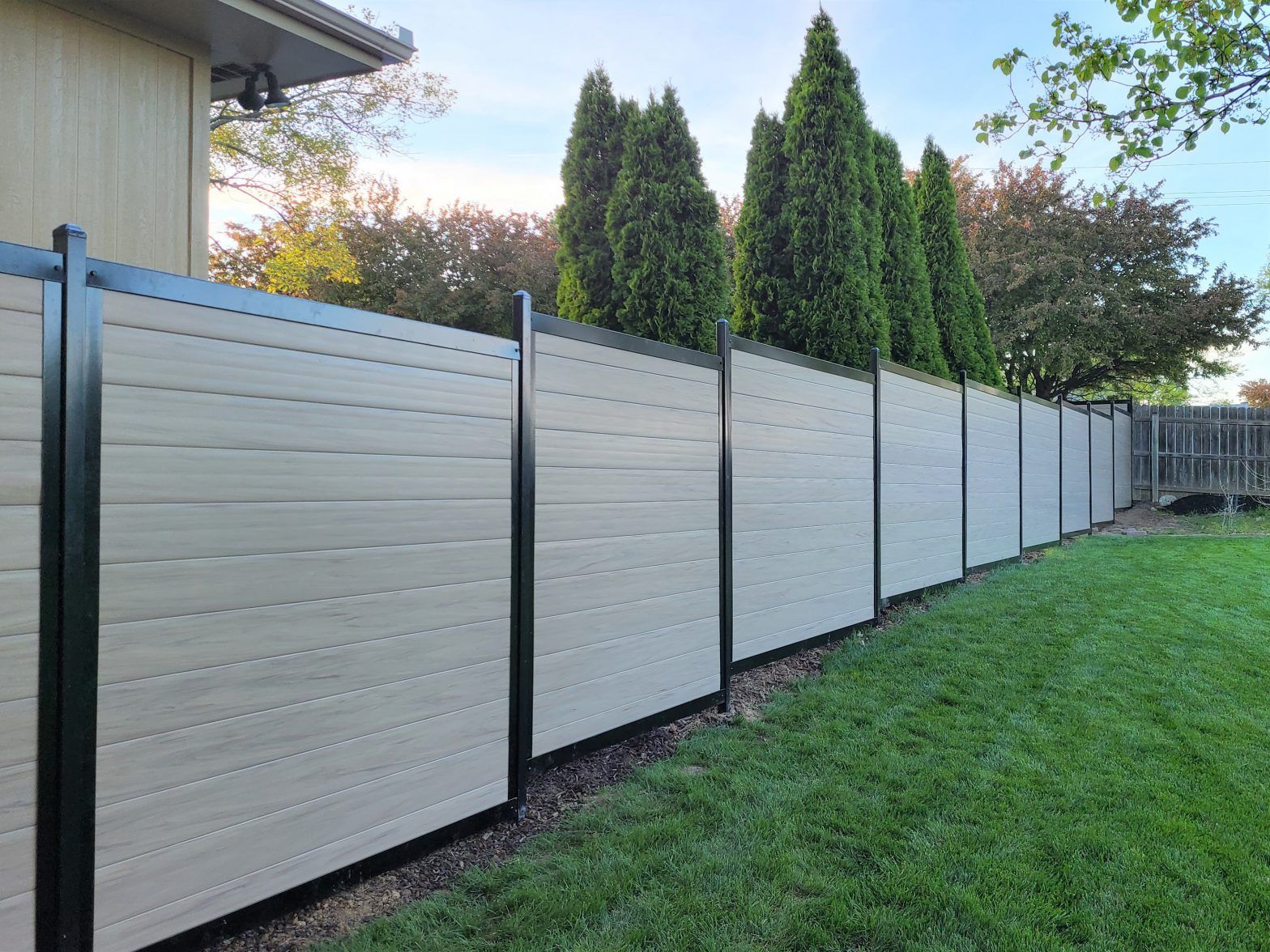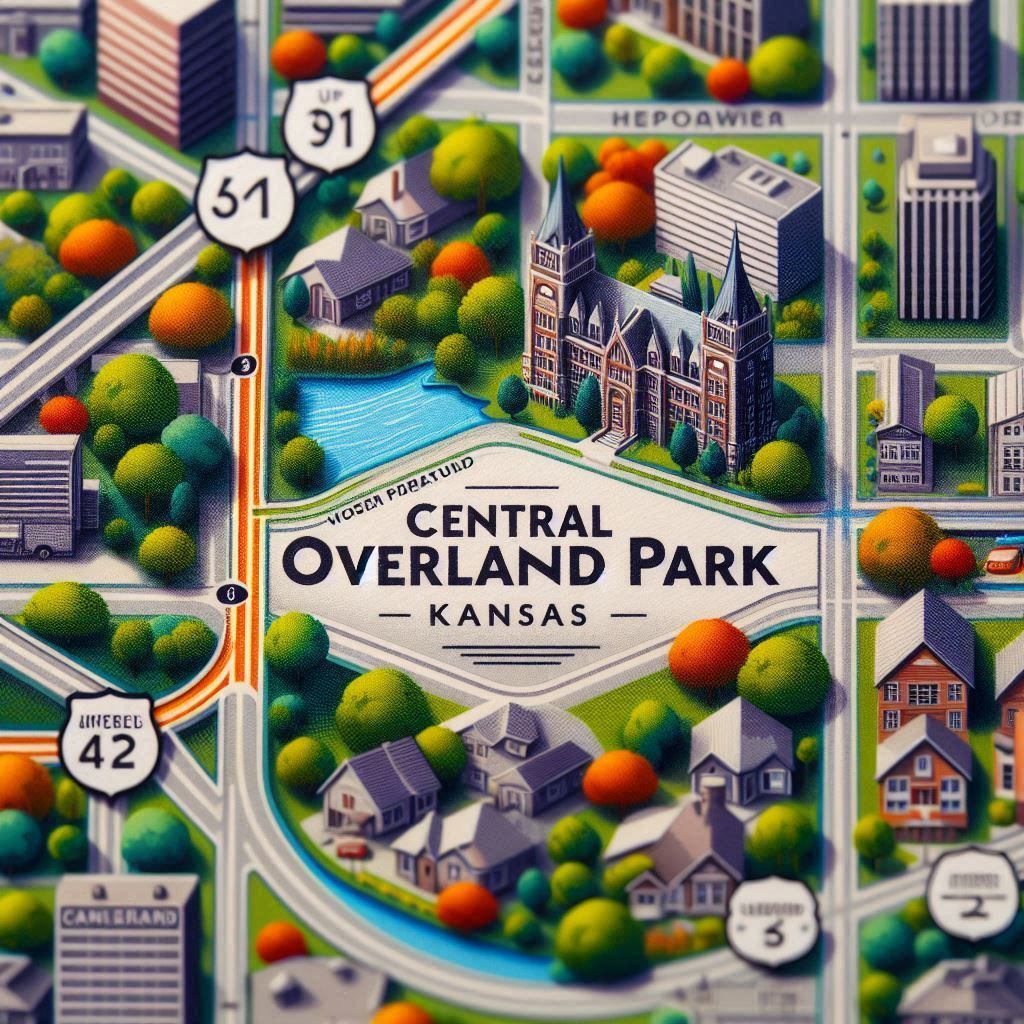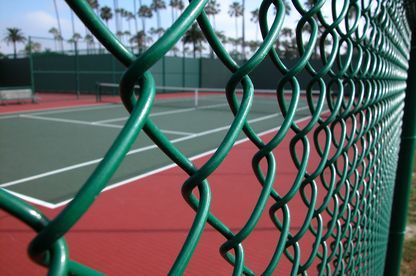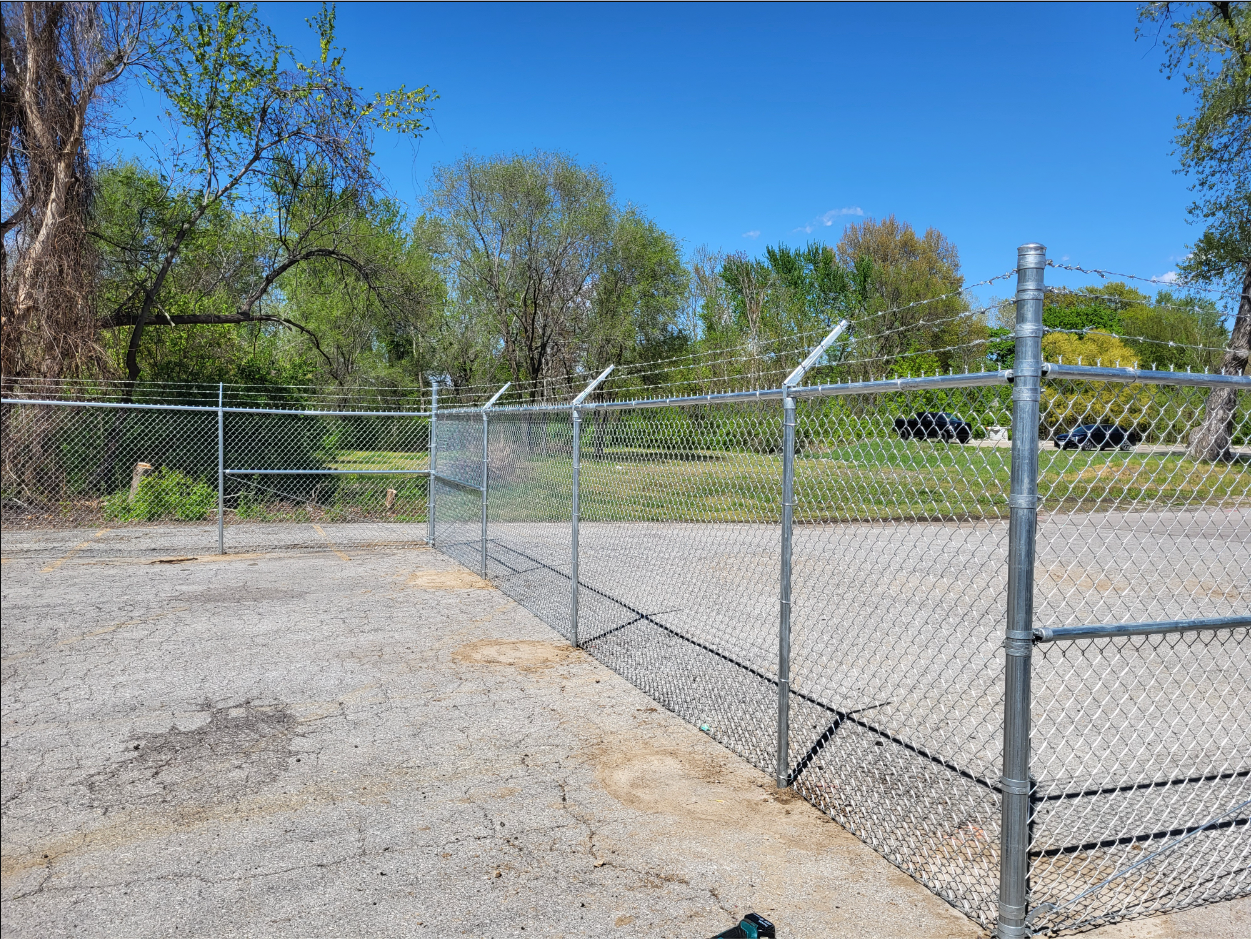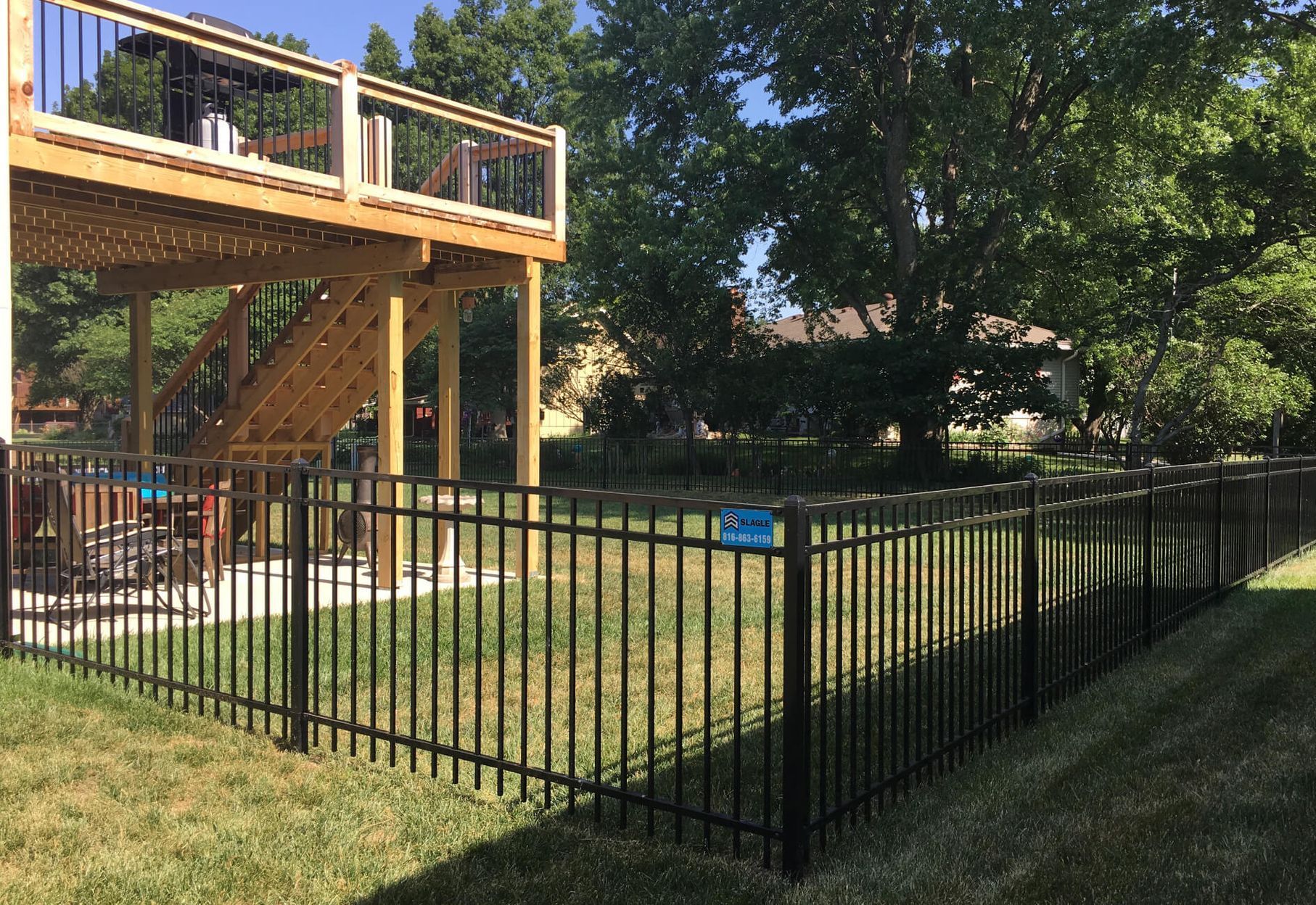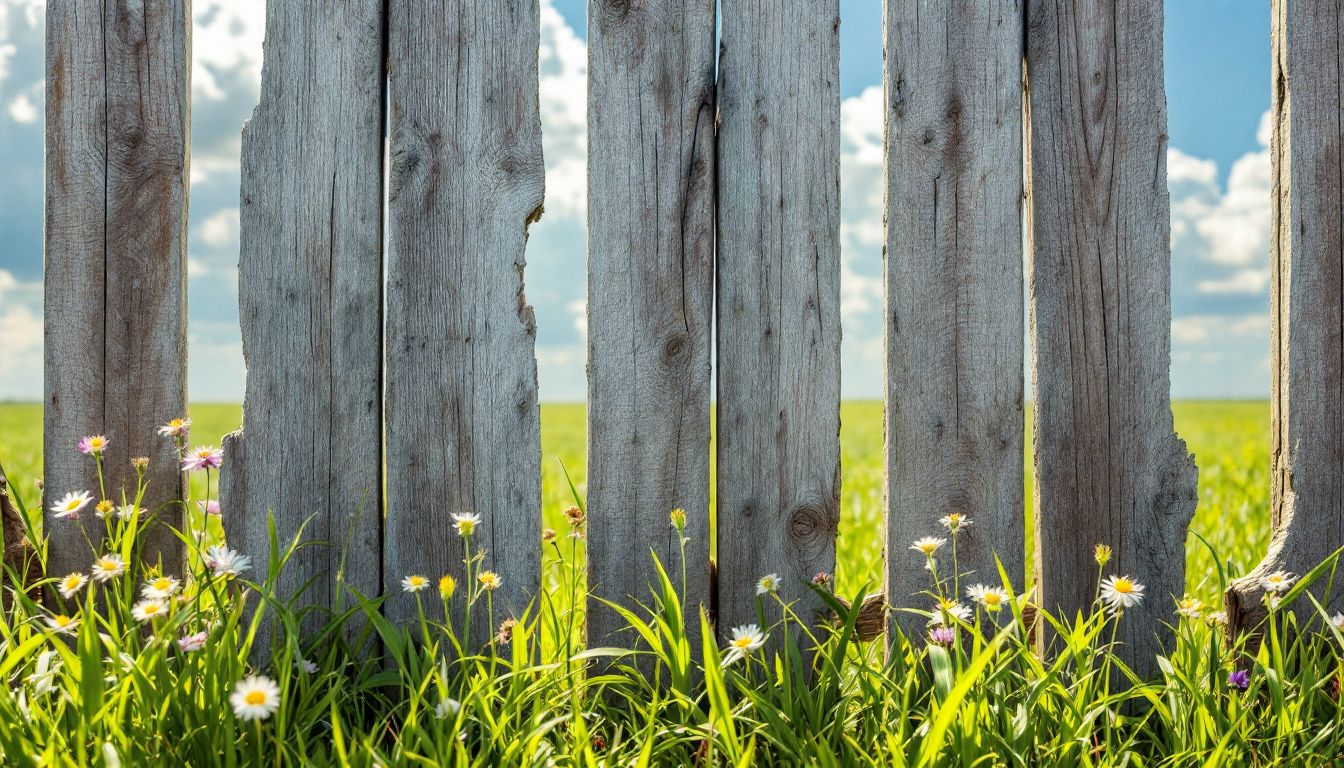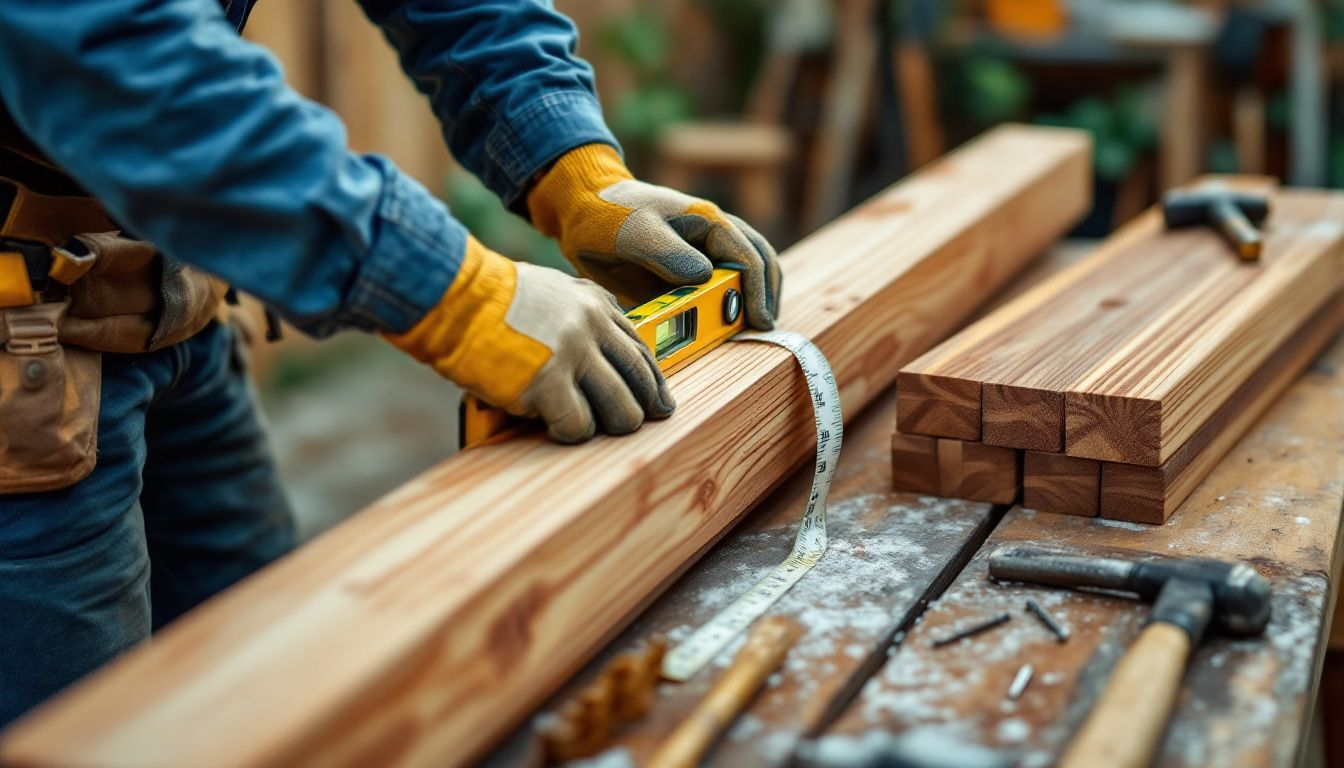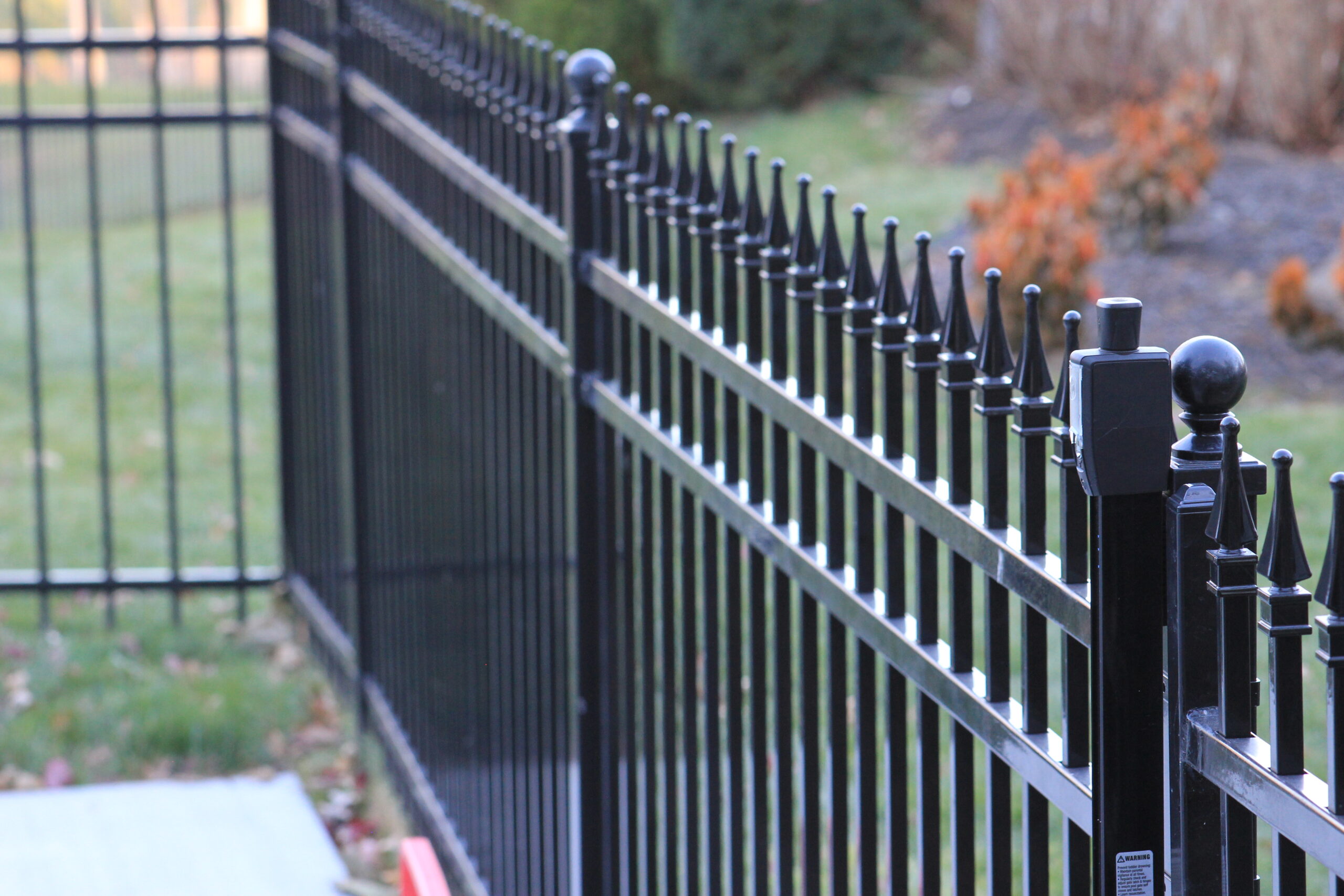Choosing the right wood for your fence can be challenging with so many options available. Whether you need a fence that withstands tough weather, fits your budget, or matches your property’s style, knowing the best wood types for fences can make all the difference. In this guide, we’ll break down the top wood choices and how to pick the best one for your needs.
Key Takeaways
- Different wood types for fencing, such as cedar, redwood, and cypress, offer unique benefits, including durability, aesthetic appeal, and resistance to decay and insects.
- Choosing the right wood depends on factors like climate, budget, and desired fence style, with options like pine being cost-effective but requiring more maintenance compared to premium woods.
- Selecting sustainably sourced wood, like FSC-certified lumber, can minimize environmental impacts while achieving a long-lasting and attractive fence.
Best Wood Types for Fences: Your Ultimate Guide
When it comes to wood fencing, the choices are plentiful. From the cost-effective pine wood to the elegant redwood, each type of wood brings its own set of benefits and drawbacks. For instance, tropical hardwoods like ipe and batu are excellent for humid environments, thanks to their resistance to mold and decay. Ipe, in particular, can last over 50 years and is highly resistant to insects and rot, making it a long-lasting investment.
Similarly, cedar privacy fences are known for their durability and aesthetic appeal, often lasting between 15 to 30 years with proper maintenance. Selecting the best wood for your fence involves considering several factors, such as climate, budget, and desired fence style. High-quality wood fences, such as those made from cedar or redwood, can be a bit more expensive initially but offer longevity and less frequent maintenance, making them cost-effective in the long run.
Moreover, choosing sustainably sourced wood can significantly reduce the environmental impact of your fencing project, promoting ecosystem health and sustainability. So, whether you’re planning a picket fence for that classic look or a privacy fence to keep prying eyes at bay, understanding the different wood options available will help you make an informed decision.
With the right choice, your wood fence can be both a functional and beautiful addition to your property that will last for years to come.
Introduction
The right fencing material can enhance the protection of your property and boost its value. While wood fences are a traditional choice, they can be susceptible to weather-related damage if not properly selected and maintained. Factors such as privacy, noise reduction, natural style, strength, and durability against the elements must be considered when choosing the best wood for your fence.
Before diving into your fence installation, it’s essential to learn about the different types of wood available and match their characteristics to your preferences and budget. From the initial cost to long-term maintenance, understanding the price range of wood types for fencing will help guide your budget decisions.
Let’s explore the common wood types and how to choose the right one based on your specific needs.
Common Wood Types for Fencing
Choosing the right wood ensures durability and aesthetic appeal in your fence design. Various types of wood are commonly used for fencing, each with unique properties. From pine wood, which is cost-effective but requires pressure treatment, to redwood, known for its premium quality and durability, there is a wood type for every need and budget.
Let’s delve into the specifics of each wood type to help you determine which one is best suited for your fencing project. We’ll cover pine, cedar, redwood, cypress, and Douglas fir, highlighting their benefits, drawbacks, and ideal uses.
Pine Wood
Pine wood is often the go-to option for those looking to minimize initial costs, as it is the least expensive wood for fencing. However, pine wood must be pressure-treated to enhance its durability and resistance to rot and insects. This process involves chemical protection that prolongs the life of pine wood, making it more durable.
Despite its affordability, pine wood is prone to dents and warping in high winds due to its softwood nature. The average lifespan of a treated pine wood fence is about 20 years, making it a reasonable choice for short to medium-term fencing needs.
Pine wood typically has a yellow or white tone and is easy to paint over, allowing for customization to match your property’s aesthetic.
Cedar Wood
Cedar wood is a popular choice for wood fencing due to its natural resistance to rot and insects. This durable wood contains natural oils that repel insects, making it an excellent option for areas prone to termite infestations. Cedar’s warm reddish tones and unique grain pattern add a distinct aesthetic appeal to any fence.
There are two main types of cedar wood: Western Red Cedar and White Cedar, both of which offer excellent durability and can last between 15 to 30 years, or even up to 40 years if properly treated. While cedar is more expensive than pine, its longevity and low maintenance requirements make it a worthwhile investment for those seeking a long-lasting fence.
Redwood
Redwood is a premium choice known for its durability and natural resistance to rot and insect infestations. This wood type can last around 25 years, making it an excellent long-term investment for your fencing needs. Redwood’s reddish-brownish natural look provides outstanding aesthetic value, enhancing the beauty of any property.
Redwood possesses natural properties that enhance its durability and resistance to environmental factors, making it an ideal choice for those looking for a high-quality, low-maintenance wood fence that is naturally resistant.
Cypress Wood
Cypress wood is another excellent choice for wood fencing, known for its natural resistance to rot and decay. This durable wood can last up to 30 years, thanks to its strong natural resistance against decay and insects. Cypress contains natural compounds, particularly cypertine, that resist damage from insects, making it a reliable option for long-lasting fences.
Cypress wood is available in many colors and is easy to stain, enhancing its aesthetic appeal for fencing. Its natural insect-repelling oils help maintain its resistance over time, though it may still require occasional treatment with insecticide to ensure longevity.
Douglas Fir
Douglas fir is known for its strong, high-quality appearance, straight grain, and light brown color with red or yellow hints. This wood type has natural resistance to rot and decay and can be treated for increased durability.
Douglas fir is a versatile choice for wood fencing, providing both strength and visual appeal.
Choosing the Right Wood Based on Climate
The choice of wood for fencing is significantly influenced by local climate conditions. Understanding your local climate helps narrow down suitable fencing material options, ensuring your fence remains durable and aesthetically pleasing over time. Different wood types have varying levels of durability based on local climate conditions, making it essential to select the right wood for your specific environment.
In the following subsections, we’ll explore the best wood options for humid climates, dry climates, and coastal areas, helping you make an informed decision based on your location.
Humid Climates
For humid climates, wood types like:
- Redwood, which is highly recommended due to its natural resistance to moisture and decay
- Cedar, another excellent choice that offers durability and a rustic appearance
- Cypress, particularly suited for these environments thanks to its strong natural resistance against moisture
These options blend seamlessly with natural surroundings.
These woods not only ensure longevity in humid conditions but also enhance the aesthetic appeal of outdoor spaces, making them popular among homeowners in moisture-rich areas.
Dry Climates
In dry climates, hardwoods like oak are beneficial as they help prevent warping and cracking due to the lack of moisture. Untreated oak wood can endure up to 20 years, making it a viable option for dry environments.
Selecting the right wood type is crucial to prevent issues associated with the arid conditions, ensuring your fence remains sturdy and visually appealing over time.
Coastal Areas
Coastal areas require wood types that can withstand high humidity and salt exposure, making resistant species crucial. Cedar and redwood are preferred for coastal fencing due to their natural resistance to moisture and saltwater corrosion, ensuring the integrity and longevity of your fence.
Fence Styles and Their Suitable Wood Types
Wood fences offer a versatile range of styles that combine aesthetics with functionality. Selecting the right type of wood can significantly improve the visual attractiveness of your property, with options like cedar and redwood offering natural beauty and durability. Whether you prefer a classic picket fence, a privacy fence for seclusion, or a split rail fence for a rustic look, choosing the appropriate wood species enhances not only the beauty but also the longevity of your fence.
Let’s explore the most popular fence styles and the suitable wood types for each. We’ll cover picket fences, privacy fences, and split rail fences, providing insights into why certain woods are better suited for each style.
Picket Fence
Picket fences are a timeless choice, often enhancing curb appeal by fencing in property without blocking views. Cedar is frequently used for picket fences due to its natural resistance to insects and durability. A typical picket fence ranges in height from 3 to 4 feet and is characterized by its uniform spacing of pickets, contributing to its visual appeal.
For a modern look, using lighter tone woods is recommended. Cedar slats can be easily replaced as the wood ages, making maintenance less of a hassle. Additionally, designs like the dog ear picket fence, featuring curved pickets, offer a distinctive aesthetic.
Privacy Fence
Privacy fences are essential for ensuring personal space and security around your home. Cedar and spruce are among the best wood types for constructing horizontal privacy fences due to their durability. Board-on-board fences, designed to overlap pickets, ensure no gaps for maximum privacy.
Features like the dog ear design provide full privacy and security for pets and children while blocking prying eyes. These fences not only offer seclusion but also add a touch of elegance to your property, making them a popular choice for homeowners seeking both functionality and style. A lattice fence can enhance this aesthetic appeal.
Split Rail Fence
A split rail fence is primarily used to designate boundaries or contain livestock, offering a rustic and traditional look that complements rural settings. This type of fence can be cost-effective, with a range of $10 to $28 per linear foot, and building it yourself can save additional costs.
Treating and Maintaining Wooden Fences
Proper treatment and maintenance significantly enhance the longevity of wooden fences by preventing decay and damage from environmental factors. Regular care ensures that a wood fence lasts longer and maintains its beauty over time. A well-maintained pine fence typically lasts around 10 to 15 years, while cedar wood can last up to 30 years if properly cared for.
In the following subsections, we’ll discuss the importance of pressure-treated wood, the benefits of staining and sealing, and the necessity of regular maintenance. These practices will help you keep your fence in top condition, prolonging its life and maintaining its aesthetic appeal.
Pressure Treated Wood
Pressure-treated wood is commonly used for fencing due to its affordability and versatility. This wood typically has a natural yellow or mint-green hue and often includes visible knots. The pressure treatment process involves using copper-based compounds to prevent fungal and insect damage, making the wood more durable and suitable for various outdoor applications.
Pressure-treated lumber is available in multiple sizes, which makes it versatile for different construction needs. By choosing pressure-treated wood, you ensure that your fence can withstand moisture, fungal growth, and insect infestations, contributing to its longevity and durability.
Staining and Sealing
Staining wood fences helps them last longer by providing protection against moisture and damage. Applying a sealant after staining increases the protective layers and enhances the fence’s longevity. Eco-friendly wood treatment options, such as natural oils or plant-based preservatives, minimize harmful environmental impacts while providing adequate protection.
Using biodegradable preservatives can help mitigate negative environmental impacts, ensuring that your fence remains both beautiful and environmentally friendly. Natural wood finishes, like those on untreated cedar and redwood, highlight the wood grain’s beauty, enhancing the overall look of your fence.
Regular Maintenance
Regular maintenance is crucial for keeping your wooden fence in top condition. Cleaning wooden fences regularly helps remove dirt and mildew, which can lead to decay over time.
Routine inspections are essential for identifying early signs of damage or wear, enabling timely repairs and ensuring the fence remains durable and visually appealing.
Cost Considerations for Different Wood Types
When planning your fence project, it’s important to consider both initial costs and long-term investment. Pine wood is less expensive and a good option for those looking to minimize initial costs, making it suitable for limited budgets. However, it’s essential to balance initial costs with long-term maintenance and potential repairs to determine the most cost-effective wood options.
In the following subsections, we’ll break down the initial costs associated with wood fencing and discuss the long-term investment benefits of choosing durable wood types. This will help you make an informed decision based on your budget and long-term needs.
Initial Costs
The average cost for wood fencing materials alone is typically between $6 and $13 per linear foot. Labor costs for installing a wood fence can range from $8 to $23 per linear foot, depending on the complexity of the installation. For example, the cost range for installing a pressure-treated pine fence is $10 to $25 per linear foot.
Side-by-side fences, which offer a more uniform and private appearance, range from $15 to $20 per linear foot. If you’re on a tight budget, options like spruce are less expensive than treated pine and can be a viable alternative.
Long-Term Investment
Investing in durable wood for fences is essential for minimizing long-term costs associated with maintenance and repairs. Redwood, for instance, can last between 20 to 25 years with minimal maintenance, especially in favorable conditions. Choosing wood that can last up to 30 years and requires minimal repairs can lead to significant cost savings over time.
While the initial cost of high-quality wood may be higher, the long-term investment in more durable wood and reduced maintenance makes it a cost-effective choice for those looking to install a long-lasting fence.
Environmental Impact of Wood Choices
The environmental impact of your wood choice is an important consideration for any fencing project. FSC-certified lumber ensures that the wood is sourced from responsibly managed forests, promoting forest regeneration and biodiversity. Chemical treatments used on wood can have adverse effects on the environment, so exploring alternative wood preservation methods is crucial.
In the following subsections, we’ll discuss sustainable wood options and the impact of treatment chemicals on the environment. This will help you make an informed decision that aligns with your environmental values.
Sustainable Wood Options
Forest Stewardship Council-certified wood ensures responsible harvesting practices, promoting forest regeneration and biodiversity. Utilizing reclaimed wood can significantly diminish the environmental footprint, as it repurposes materials that would otherwise contribute to landfill waste. Bamboo is another sustainable option, being a rapidly renewable resource that requires minimal chemicals during its growth.
Choosing sustainable wood options is essential for reducing the environmental impact of fencing projects. By selecting materials like FSC-certified lumber, reclaimed wood, or bamboo, you contribute to environmental sustainability while still achieving a beautiful and durable fence.
Treatment Chemicals
Chemical treatments for wood preservation can leach toxic substances into the environment, necessitating careful consideration of alternatives. These chemicals can contaminate soil and water, potentially harming local flora and fauna.
Exploring eco-friendly alternatives, such as natural oils and non-toxic sealants, can help mitigate these negative impacts while still providing the necessary protection for your wood fence.
Enhancing Curb Appeal with Wood Fences
Utilizing wood fences can greatly improve the overall appearance of your property, making it more inviting and attractive. Cypress wood, available in various colors, allows for aesthetic flexibility, while the rustic appearance of split rail fences typically complements rural and natural settings. Incorporating decorative elements like finials or lattice fences can elevate the aesthetic of a wood fence.
In the following subsections, we’ll explore how to achieve a natural look with wood fences and discuss customization options to enhance curb appeal further. These tips will help you create a fence that not only serves its functional purpose but also adds charm and sophistication to your property.
Natural Look
Natural wood finishes highlight the grain and texture of the wood, enhancing the visual appeal while adding protection against weather elements. Applying stain not only enhances the aesthetic of wood fences but also adds a layer of protection against moisture and UV damage.
Achieving a natural look involves selecting untreated or minimally treated wood types like cedar and redwood, which provide an inherent beauty that complements the natural surroundings.
Customization
Customizing wood fences with paint or decorative elements allows homeowners to match the fence with their home’s style and color scheme. Stains and paints enable homeowners to reflect personal style and harmonize with home exteriors. Incorporating features like lattice tops, decorative panels, outdoor lighting, or hanging planters can further personalize a wood fence, adding charm and sophistication to the property.
Customization not only reflects personal taste but also enhances the overall curb appeal of a property, making it more inviting and visually appealing.
Summary
In summary, choosing the right wood for your fence involves considering various factors such as climate, budget, and desired fence style. From the cost-effective pine to the premium redwood, each wood type offers unique benefits that cater to different needs and preferences. Proper treatment and maintenance, such as pressure treating, staining, and regular inspections, can significantly enhance the longevity and durability of your wood fence.
Investing in durable and sustainable wood options not only provides long-term cost savings but also minimizes environmental impact. Whether you’re looking to enhance curb appeal with a natural look or customize your fence to match your home’s style, the right wood choice can make all the difference. Take the time to explore your options and choose the wood that best fits your needs for a beautiful and long-lasting fence.
Frequently Asked Questions
What is the most cost-effective wood for fencing?
Pine is your best bet for a cost-effective fencing solution. It’s affordable and, when pressure-treated, provides decent durability against rot and pests.
How long do cedar fences typically last?
Cedar fences typically last 15 to 30 years, and with proper treatment and maintenance, they can even reach up to 40 years. So, investing in their care can really pay off!
What wood is best for humid climates?
Redwood, cedar, and cypress are your best picks for humid climates because they’re naturally resistant to moisture and decay. Choosing any of these will help ensure your wood lasts longer in those damp conditions.
Are chemical treatments for wood fences environmentally friendly?
Chemical treatments for wood fences aren’t very eco-friendly since they can leach toxic substances. Consider using natural oils or non-toxic sealants as better alternatives.
How can I enhance the curb appeal of my wood fence?
To enhance the curb appeal of your wood fence, consider using natural wood finishes, adding a pop of color with paint, or incorporating decorative elements like lattice tops and hanging planters. These simple changes can really elevate your fence’s look!











